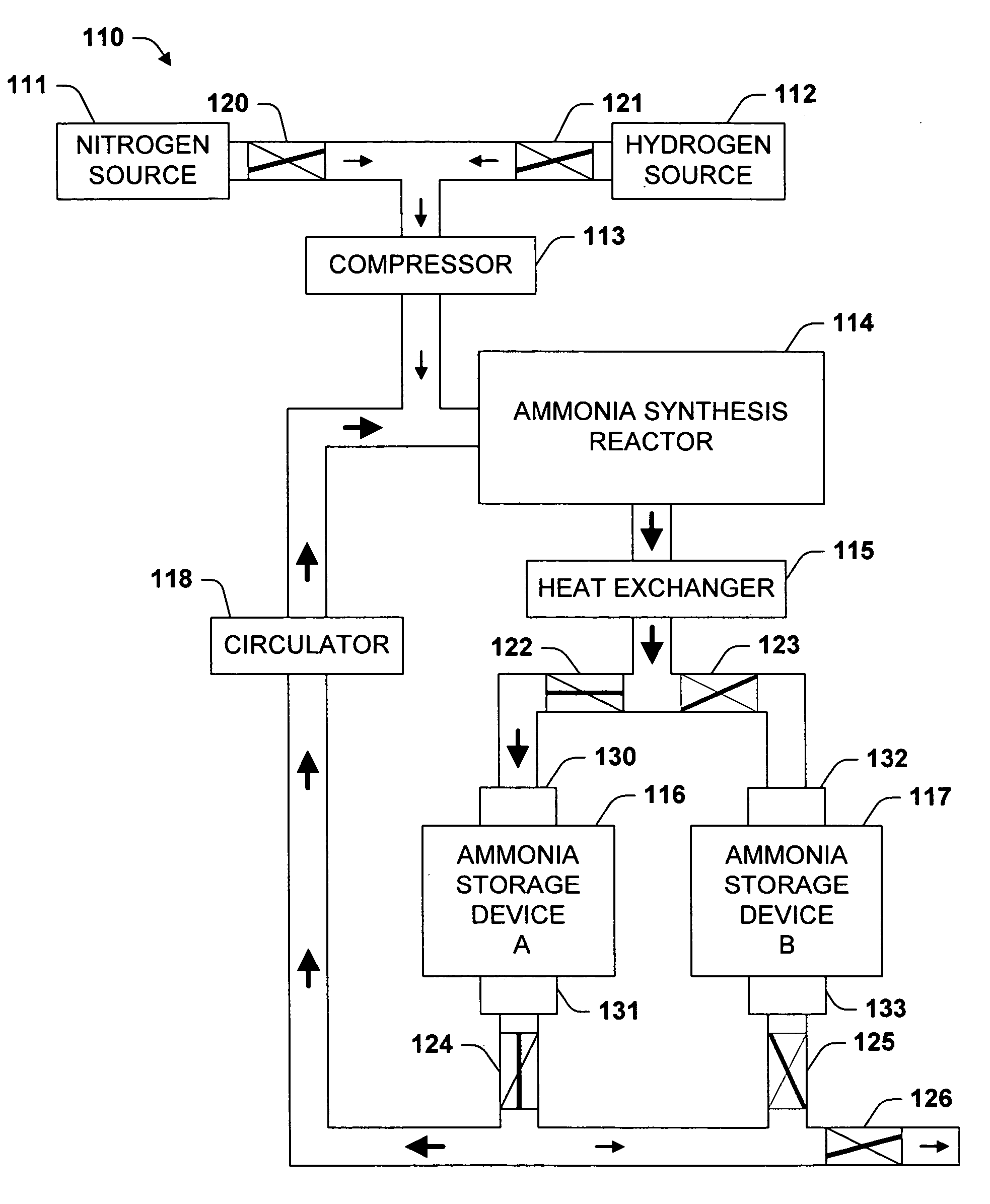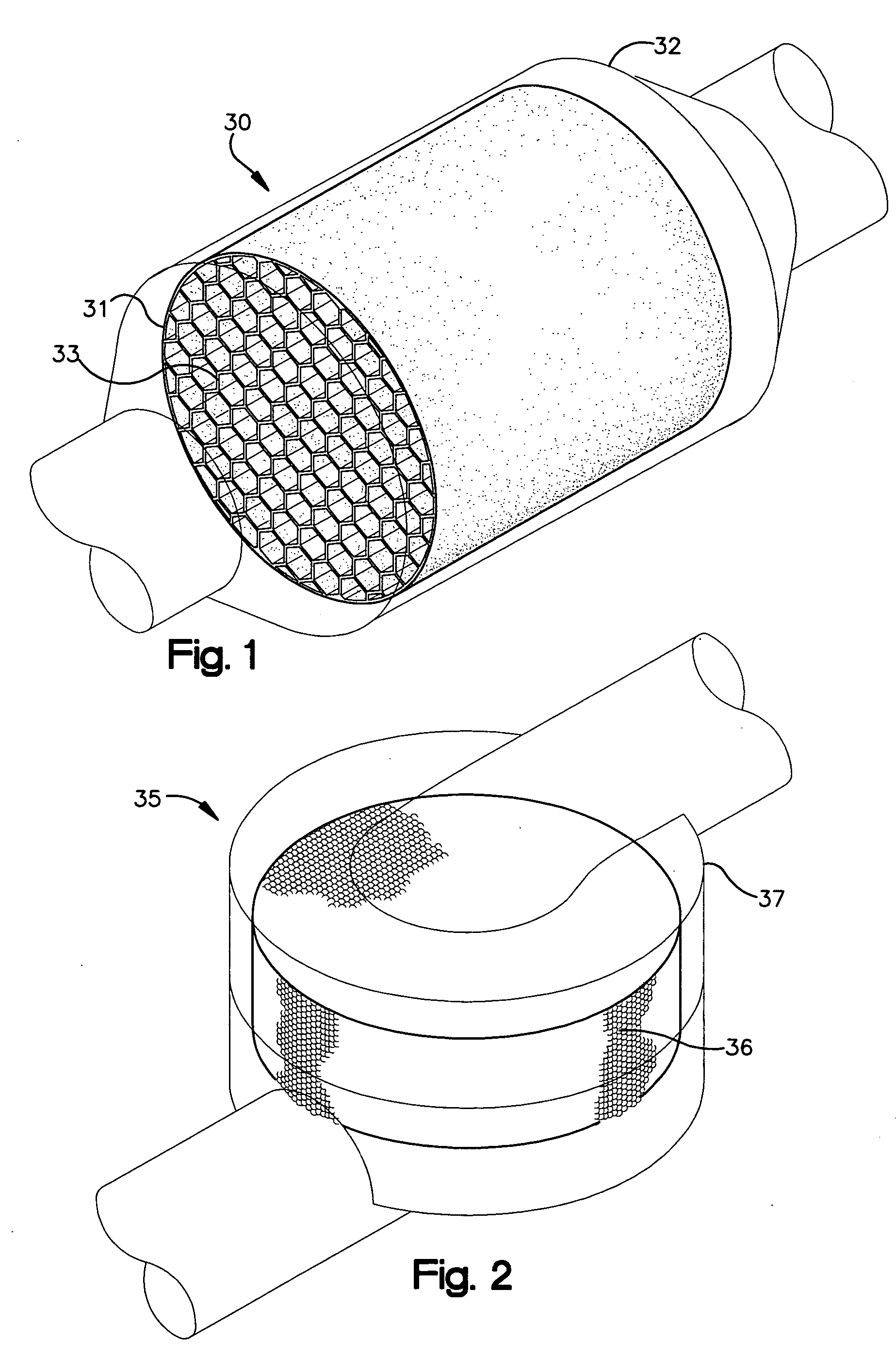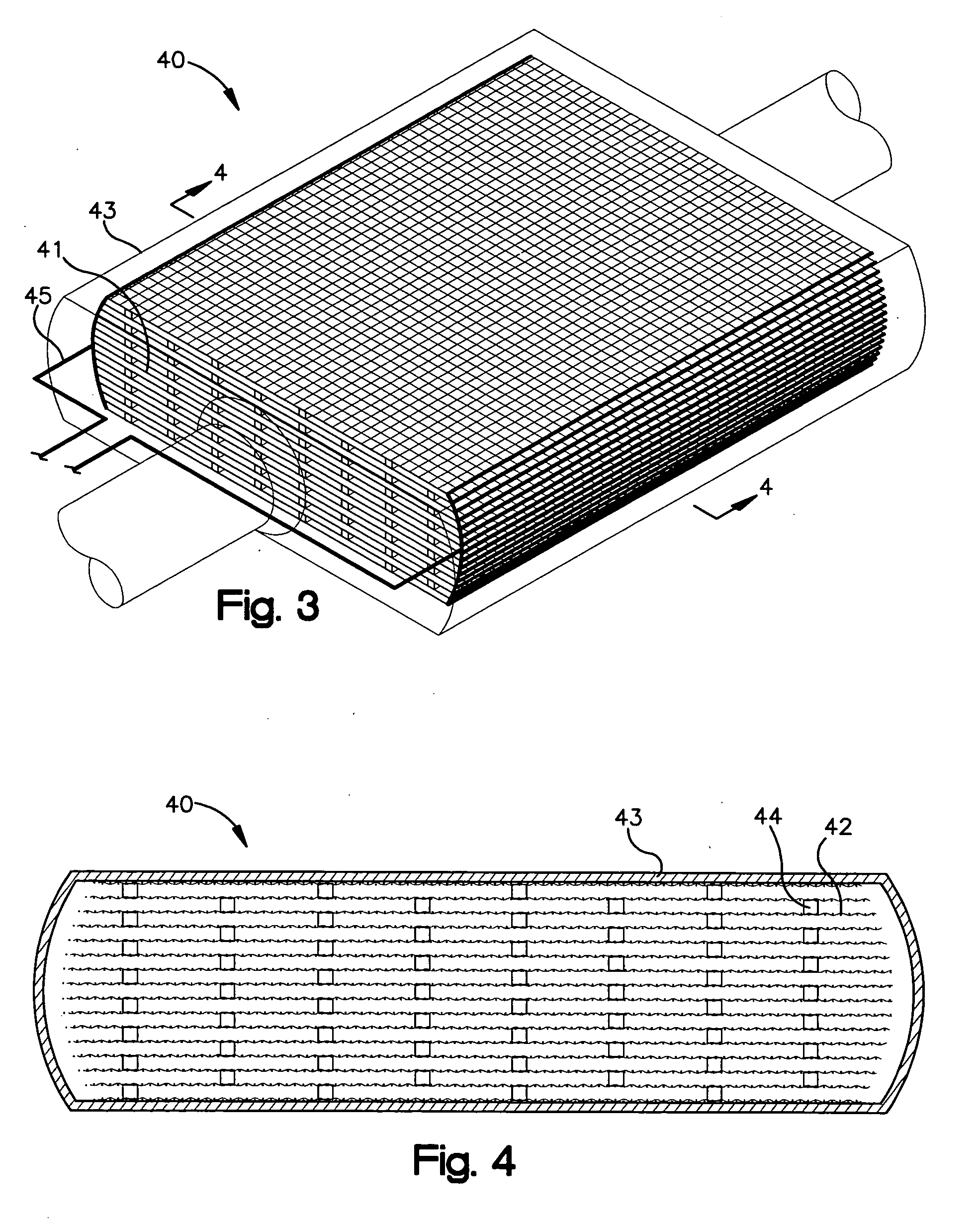Adsorption based ammonia storage and regeneration system
- Summary
- Abstract
- Description
- Claims
- Application Information
AI Technical Summary
Benefits of technology
Problems solved by technology
Method used
Image
Examples
Embodiment Construction
[0029] One aspect of the present invention relates to the idea of generating ammonia in small synthesis plants and storing the ammonia by adsorption. A synthesis plant can form ammonia from H2 and N2 or from H2 and NO. H2, N2, and NO can be generated from just air, fuel, and water. The synthesis plant can be stationary or vehicle-mounted. Storing the ammonia in adsorption beds serves the dual functions of extracting ammonia from a dilute stream, which is the typical product of a small scale ammonia synthesis plant, and of providing a safe system for storing substantial quantities of ammonia on vehicles.
[0030] An ammonia storage device according to the present invention is adapted for use in a vehicle exhaust system. Vehicle exhaust systems create restriction on weight, dimensions, and durability. For example, an adsorption bed for a vehicle exhaust systems must be reasonably resistant to degradation under the vibrations encountered during vehicle operation. A vehicle is typically p...
PUM
| Property | Measurement | Unit |
|---|---|---|
| Temperature | aaaaa | aaaaa |
| Temperature | aaaaa | aaaaa |
| Temperature | aaaaa | aaaaa |
Abstract
Description
Claims
Application Information
 Login to View More
Login to View More - R&D
- Intellectual Property
- Life Sciences
- Materials
- Tech Scout
- Unparalleled Data Quality
- Higher Quality Content
- 60% Fewer Hallucinations
Browse by: Latest US Patents, China's latest patents, Technical Efficacy Thesaurus, Application Domain, Technology Topic, Popular Technical Reports.
© 2025 PatSnap. All rights reserved.Legal|Privacy policy|Modern Slavery Act Transparency Statement|Sitemap|About US| Contact US: help@patsnap.com



